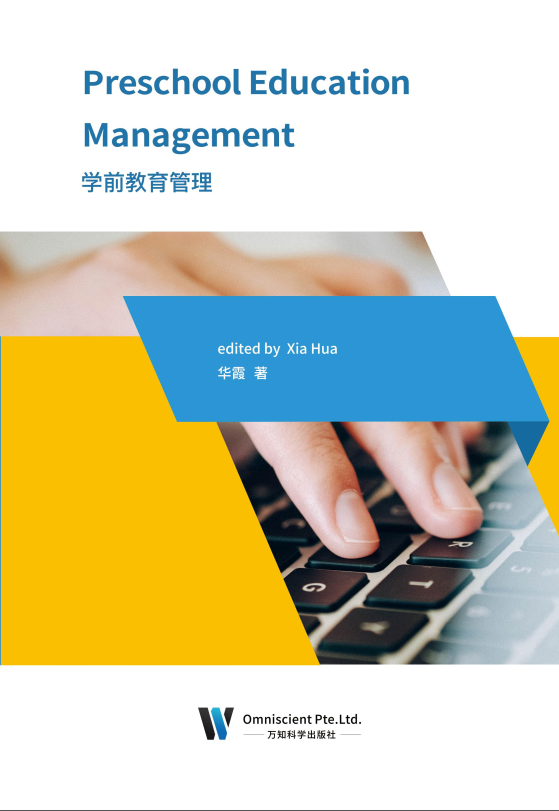
Education is the foundation for a hundred years. The 21st century is the era ofknowledge economy. If China wants to catch up with the level of the world’smedium-sized developed countries in the middle of the 21st century, it must put education in the first place of development. We should adhere to the principle that education should serve the socialist modernization drive and the people, combine it with productive labor and social practice, and cultivate socialist builders and successors with all-round development of morality, intelligence, physical integrity and beauty. Training a large number of education management talents is an important task for all kinds of education departments in the 21st century. As an important part of national education system, preschool education is the beginning of lifelong education. The development of preschool education is of great significance to the promotion of children physical and mental health, the construction of a lifelong education system and the overall construction of a harmonious society. Therefore, improving the overall level of early childhood education is an important part of the national development strategy.
Up to now, more and more researches have revealed the importance of preschool education in the development process of human life, and the requirements of society for the quality of preschool education are increasing day by day. This undoubtedly puts forward higher requirements and expectations for preschool educators, especially preschool teachers. The key to improve the quality of preschool education is to build a high-quality team of preschool education teachers and constantly improve the professional quality of preschool education teachers. It is also the fundamental guarantee for the rapid development of preschool education in China. Facing the whole country and drawing on the advanced international educational management concepts, the book has made breakthroughs in human resources, environmental resources and scientific research management of preschool education. At the same time, on the one hand, it realizes the organic combination of various internal factors of preschool education, on the other hand, it integrates all external factors of preschool education, which makes the book expand from the internal to the external of preschool education management, forming an open system.
This book is applicable to preschool education institutions with different characteristics, and strives to organically combine the professional management of preschool education with the comprehensive management of preschool education, and organically combine the modern management theory with the practice of preschool education management. On this basis, it seeks the ways and methods of education management for all children.
Due to the tight time, heavy task and limited editor’s level, there are inevitably deficiencies and inadequacies in the book. We sincerely ask the readers to put forward valuable opinions in the use process. We will continue to work hard to make this book more mature and perfect, and do our best for the development of early childhood education in China.
前 言
百年大计,教育为本。 21 世纪是知识经济时代,中国要想在 21 世纪中叶赶上世界中等发达国家的水平,必须将教育置于发展的首要位置。坚持教育为社会主义现代化建设服务,为人民服务,与生产劳动和社会实践相结合,培养德智体美全面发展的社会主义建设者和接班人。 培养大批教育管理人才, 是 21 世纪各级各类教育部门共同担负的一个重要任务。学前教育作为国民教育体系的重要组成部分,是终生教育的开端。发展学前教育,对促进儿童身心健康,构建终身教育体系,全面建设和谐社会具有重要意义。因此,提高幼儿教育的整体水平是国家发展战略的重要组成部分。
到现在,越来越多的研究揭示了学前教育在人的一生的发展过程中的重要性,社会对学前教育质量的要求日益提高。这无疑对广大的学前教育工作者尤其是幼儿教师提出了较高的要求和期望。建设一支高素质的学前教育师资队伍,不断提高广大学前教育教师的专业素质,是提高学前教育质量的关键。也是我国学前教育事业长足发展的根本保证。本书面向全国,借鉴国际先进的教育管理理念,在学前教育的人力资源、环境资源、科研管理等方面有所突破。同时,一方面实现了学前教育内部各方面因素的有机结合,另一方面整合了学前教育外部的各方面因素,使本书从学前教育管理内部向外部拓展,形成开放性的体系。
本书适用于不同特色的学前教育机构,并力求把学前教育专业管理与学前全面教育管理有机结合,将现代管理理论与学前教育管理实际有机结合,在此基础上,寻求面向全体儿童的教育管理途径和方法。
由于时间紧,任务重,编者水平有限,在书中不可避免地存在着不足、不妥之处,恳请读者在使用过程中提出宝贵的意见。我们将继续努力,使本书更加成熟和完善,为我国幼儿教育事业的发展尽绵薄之力。
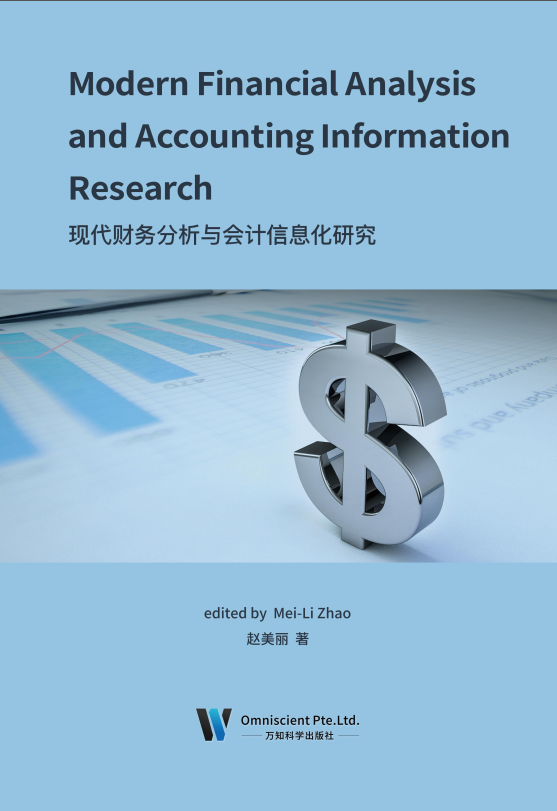
Financial analysis is not only a science, but also an art. In order to meet the needs of the market economy construction for the management and control of the financial accounting information of the enterprise, the editor reveals the financial situation and operation results of the enterprise from the complicated and indistinct financial data, finds out the problems in the operation and management of the enterprise, and puts forward the improvement direction accordingly. The editor compiles this book based on his own practical work experience and rich experience. This book is organized according to the principle of both theory and practice, which is beneficial for the majority of practical workers to learn and apply, and can be a good teacher and friend for practical workers to carry out financial analysis. Nowadays, most of the accountants engaged in the work of financial accounting analysis are the accounting directors of the units or the heads of the accounting institutions, and almost all of the analysis data are based on the accounting data. From the perspective of helping to carry out the analysis work, this book selects the structural arrangement with accounting elements as the main line, which is different from the system structure of other similar textbooks of financial accounting analysis, so as to help analysts get rid of the traditional framework constraints of three statement analysis. This makes the financial analysis work produce better practical results. Not only that, the editor has also made a more in-depth analysis and research on accounting informatization, and has put forward many new ideas, which is not only conducive to improving readers’ understanding of financial analysis, but also to improving readers’ ability of financial analysis. The editor sincerely hopes that the publication of this book can play a positive role in promoting the practice of financial analysis. However, due to the limited level of the author, it is inevitable that there will be omissions and deficiencies in the book. Readers are kindly requested to criticize and correct it so that we can improve it in the next revision.
前 言
财务分析既是一门科学,更是一门艺术。为了适应当今市场经济建设对企业财务会计信息管理控制的需要,从企业纷繁复杂、真伪难辨的财务数据中真实有效地揭示出企业的财务状况和经营成果,找出企业经营管理的问题所在,并据此提出改进方向,编者结合了自身的实际工作经历和丰富的经验编写了此书。
本书本着理论与实务并重的原则组编相关内容,有利于广大实际工作者学习应用,可以成为实际工作者进行财务分析工作的良师益友。当今会计界从事财务会计分析工作的大多是单位的会计主管或会计机构的负责人,所依据的分析资料又几乎全部来自会计资料。从有助于开展分析工作的角度出发,本书选择了以会计要素为主线的结构编排,这样做便有别于其他同类财务会计分析教材的体系结构,从而有利于分析者摆脱传统以三张报表分析为主的框架约束,使财务分析工作可以产生更好的实际效果。不仅如此,编者还对会计信息化问题进行了较为深入的分析研究,提出了不少新观点,既有利于提高读者对财务分析工作的认识,也有利于提高读者的财务分析能力。殷切希望本书的出版,能够为财务分析的实践工作起到积极的推动作用。但由于作者水平有限,书中难免还会存在遗漏和不足,恳请读者批评指正,以便我们在下次修订中加以完善。
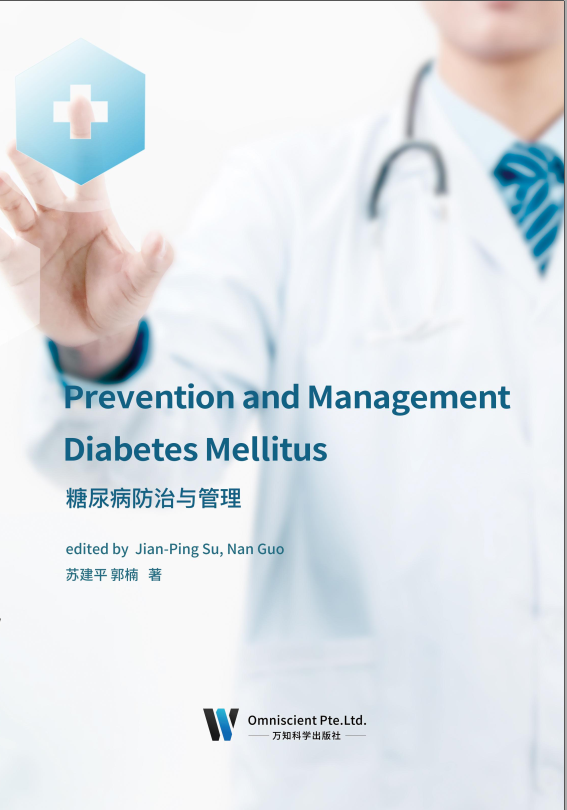
In recent years, due to the improvement of living standards, changes in the diet structure, the increasingly tense life rhythm and the lifestyle of less movement and more sitting, the global incidence of diabetes has increased rapidly, and the impact of diabetes on people’s health in China has become increasingly serious. In addition, there are still many problems in the prevention and treatment of diabetes in China such as the low penetration rate of relevant knowledge about diabetes, and the general public’s awareness of diabetes does not match the trend of diabetes epidemic. Experts pointed out that because people’s diet structure is changing from plant type to animal type, high-fat and high-calorie foods are increasingly filling our lives, and the knowledge of diabetes and the concept of healthy life are not universal enough, which all
put forward higher requirements for the prevention and treatment ability and diabetes education in China.
Therefore, this book will elaborate on the introduction of diabetes, acute complications of diabetes, chronic complications of diabetes, and treatment of diabetes, combined with diabetes and its comorbidities, comprehensive management of diabetic patients, and care of special diabetes population.
前 言
近年来,由于生活水平的提高,饮食结构的改变,日趋紧张的生活节奏以及少动多坐的生活方式等诸多因素,全球糖尿病发病率增长迅速,糖尿病对我国人民健康的影响也日趋严重。除此之外,我国在糖尿病防治方面依然存在相关知识普及率低,广大民众对糖尿病的认知程度与糖尿病流行的趋势不相符合等诸多问题。专家指出,由于目前人们的饮食结构正在由植物型向动物型转变,高脂肪、高热量食物正越来越多地充斥我们的生活,加上糖尿病知识以及健康生活理念不够普及,都对中国糖尿病防治能力以及糖尿病教育提出更高的要求。因此,本书将通过对糖尿病概论、糖尿病急性并发症、糖尿病慢性并发症、糖尿病的治疗,并结合糖尿病及其伴发病、糖尿病患者的综合管理、糖尿病特殊人群的护理等方面进行一番阐述。
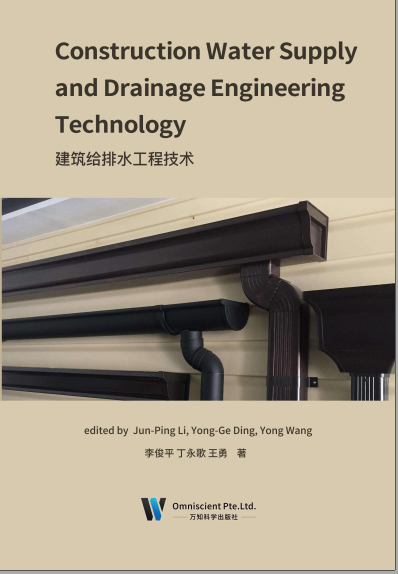
With the development of building water supply and drainage engineering, it is gradually becoming a relatively independent engineering discipline, which covers more and more contents and contains more and more complex systems. How to optimize the design of building water supply and drainage engineering is a problem that designers often face. As for the technology of building water supply and drainage engineering, the current situation depends on the summary of experience, but people’s experience is limited. With the emergence of large-scale, multi-functional and super high-rise buildings in economic construction, new requirements for building water supply and drainage engineering are put forward.
This book first outlines the technical content and current situation of building water supply and drainage engineering, optimization of building water supply and drainage engineering system, and water-saving technology of building water supply and drainage engineering. Then from the construction and optimization of building water supply pipeline, building water supply system, building fire water supply system, building drainage system, building sewage treatment, building reclaimed water system, residential water supply system and residential drainage system, the paper elaborates all aspects of building water supply and drainage engineering. Among them, a lot of space is used to elaborate and summarize the current key problems of water supply and drainage in high-rise buildings and residential areas.
The purpose of our book is to provide a practical textbook and reference book for the majority of architectural designers and practitioners in the construction industry. However, because the book covers a wide range of contents and involves complicated knowledge, the format, depth and breadth of the contents of each chapter may not be the same, and fallacies are inevitable. Readers are welcome to criticize and correct them.
前 言
建筑给水排水工程发展至今,正逐渐成为一门相对独立的工程学科,其所涵盖的内容越来越广,包含的系统越来复杂。如何使建筑给水排水工程设计优化,是设计者经常面临的问题。关于建筑给水排水工程技术,现状是依赖于过经验的总结,但人们的经验是有限的,随着经济建设中,大体量、多功能、超高层建筑的出现,对建筑给水排水工程提出了新的要求。
本书先概述了建筑给排水工程技术内容与现状、建筑给水排水工程系统优化以及建筑给排水工程节水技术。再分别从建筑给水管道施工与优化、建筑给水系统、建筑消防给水系统、建筑排水系统、建筑污水处理、建筑中水系统、居住小区给水系统和居住小区排水系统八部分详细阐述了建给排水工程所涉及到的方方面面,其中更是用了大量篇幅对高层建筑及居住小区给排水这一当前建筑行业重点问题行阐述与总结。
我们编写这本书的意图是为广大建筑设计人员及建筑业从业者提供一本切合实用的教材与参考书。但因为本书包罗内容较广,涉及知识较繁琐,各章节内容的格式、深度和广度可能并不一致,且谬误无可避免,敬请读者批评指正。
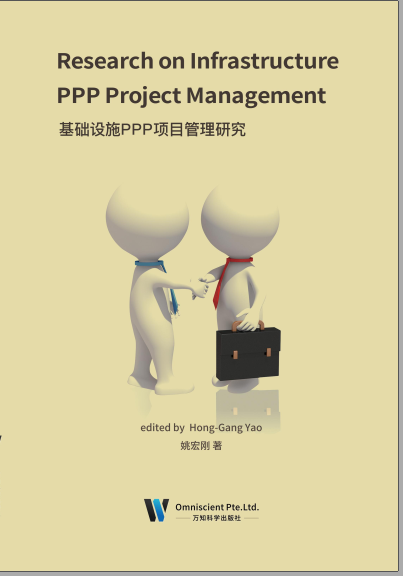
Since the beginning of the 21st century, in order to promote the sustainable and healthy development of economy and accelerate the process of socialist modernization, China has clearly put forward the urbanization strategy, and the speed of urbanization has been accelerating. The corresponding infrastructure construction, such as urban indemnificatory residential engineering, transportation facilities, urban water supply, gas supply and heating facilities has also developed. However, at present, the funds in China’s financial budget are far from meeting the needs of infrastructure construction. At the same time, the private surplus funds have expanded unprecedentedly and maintained stable development. How to make better use of these non-governmental capital and let it participate in the infrastructure construction of our country has become a realistic problem in front of us. The development of public private partnership (PPP) provides a way to solve this problem.
After the 18th National Congress of the Communist Party of China, the country has strengthened the Reform and Opening up. From the first mention of PPP mode at the Third Plenary Session of the 18th CPC Central Committee to the introduction of relevant policies by the National Development and Reform Commission and the Ministry of Finance, PPP mode has been gradually popularized in China and relevant policies have been gradually improved. PPP model not only uses idle social funds to relieve the pressure of financial budget funds, but also enables the government and the private sector to establish a cooperative relationship in the field of infrastructure construction, develop strengths and avoid weaknesses, and complement each others’ advantages, so as to better play their respective roles and advantages, reasonably allocate resources, put an end to resource abuse, optimize the allocation of resources, improve the use efficiency of resources, meet the public demand, improve the social governance function, and ensure the quality of infrastructure and public products.
前 言
进入 21 世纪以来, 为促进经济的持续健康发展, 加快社会主义现代化建设进程,我国明确提出城镇化战略,城镇化速度不断加快,相应的城市保障性居住工程、运输设施、城市供水供气供暖设施等基础设施建设也随之发展。但是,当前我国财政预算内的资金远远无法满足基础设施建设的需要,与此同时,民间剩余资金却空前膨胀,且保持了稳定发展。如何更好地利用这些民间资本,让其参与到我国基础设施建设中,成为摆在我们面前的现实问题。政府和社会资本合作模式(Public Private Partnership,简称 PPP 模式)的发展为解决这一问题提供了思路。
党的第十八次全国代表大会以后,国家加大了改革开放的力度。从党的十八届三中全会首次提到 PPP 模式,到国家发改委、财政部等陆续出台相关政策, PPP 模式在国内逐渐得到了普及,相关政策也得到了逐步完善。 PPP 模式不仅利用社会闲置资金缓解了财政预算资金压力,而且使得政府部门和私营部门在基础设施建设领域建立起合作关系,扬长避短,优势互补,从而更好地发挥了他们各自的作用以及各自的优势,合理调配资源,杜绝资源滥用,优化了资源的配置,提高了资源的使用效率,满足了公共需求,完善了社会治理功能,保障了基础设施和公共产品质量。